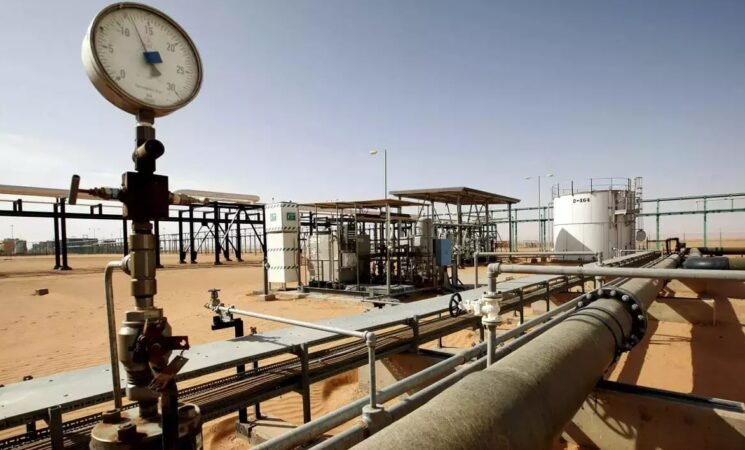6 August 2025, NIICE Commentary 11590
Anurag Paul
After the oil crisis of the 70s, as prices rose and a scarcity of affordable supplies became a real and pressing concern for countries in different parts of the world, ensuring energy supplies became a constant concern for all governments. Energy trade characterized by rising resource nationalism, the concerns of an increasingly volatile West Asia, and potential threats to energy infrastructure and transit routes have made defining an energy policy for India, which takes us towards an ‘energy secure’ future, a critical goal today.
Fossil fuels are the source of most of India’s commercial and primary energy supplies. They are also not a resource the country is particularly well endowed with. The nation’s energy security is therefore critically linked to the performance of global energy markets. The Gulf and Central Asia have a crucial place in the pursuit of India’s energy security interests. Both these regions attract considerable international attention on account of their significant hydrocarbon reserves. Until recently, Saudi Arabia and Iran have been India’s largest oil trading partners, which is currently Russia. The OPEC (Organization of the Petroleum Exporting Countries) members cooperate with India beyond the hydrocarbon value chain, in areas including prospecting in each other’s territories, and exchanges in regard to R&D, technology, safety norms, and training. However, challenges in this respect are aggravated by the fact that not only has supply capacity not been able to keep up with demand increases, resulting in sharp price increases, but also the major suppliers of oil to India behave as a cartel. To diversify its energy partners, India has in recent years turned its attention to Oman. In 2005, the Indian Petroleum Minister made highly publicized visits to Kazakhstan, Azerbaijan, and Turkey, which led to the finalization of a comprehensive programme of bilateral and regional cooperation in the hydrocarbon sector. In Kazakhstan, Indian companies are pursuing E&P proposals in the Caspian, while Azerbaijan and Turkey are emerging as partners in the gas pipeline sector in the execution of pipeline projects from Central Asia to Europe. Indian and Turkish companies will also cooperate in executing projects in their own countries and third countries. The possibility of purchasing Azeri oil at Ceyhan was also examined: this led to the first shipment of Central Asian oil to India, in late 2005. Besides commercial interests in Central Asia, India continues to have political and strategic interests, centred on curbing the influence of Islamic extremism, particularly the influence of Taliban-related activities, and contributing to the maximum extent possible to a unified, stable, and peaceful Afghanistan. This Indian agenda finds a ready resonance among the Central Asian countries, which has led to a brisk exchange of high-level visits and expanding political and economic ties. The Oman–India sub-sea natural gas pipeline that would link Oman gas fields to a landfall point in Gujarat, which was not materialized in 1995 due to technical constraints, has been revived. This may address several of the security and transit issues that India faces with regard to overland pipelines.
India has been vigorously pursuing the Iran–Pakistan–India (IPI) gas pipeline project in spite of sustained US public criticism of the project and diplomatic demarches. India attaches great importance to the Turkmenistan–Afghanistan–Pakistan–India (TAPI) project, not just in terms of meeting Indian and Pakistani energy needs but also because it would provide Afghanistan with transit fees and possibly even the chance to develop Afghanistan’s gas reserves in the Herat region. However, in recent times, due to conflict among India’s energy partners, e.g. USA and Iran, India had to reduce oil imports from Iran. In the wake of its difficult geographic location in South Asia, India faces a strategic challenge to meet its energy needs. China’s Belt and Road initiative can give China a definitive advantage if any conflict ensues between countries, by disturbing India’s access to energy. China has earlier tried to sabotage the Myanmar-India pipeline deal and presently has obstructed India’s entry into the Nuclear Suppliers Group (NSG), which has further alienated India from cooperating with energy giants. Furthermore, the failure to get on board all interested parties in the gas pipeline and the TAPI gas pipeline for an assured supply of natural gas has left India to rethink its nuclear diplomacy in terms of renewable energy and more import diversification. The India Energy Security Scenarios, 2047(IESS) has been developed as an energy scenario-building tool, under NITI Aayog, to explore a range of potential future energy scenarios for India, for diverse energy demand and supply sectors leading up to 2047.
Though it would be difficult to comment whether India is going in the right direction, it is definitely on track for this. Even if the Covid-19 pandemic has led India to miss its target to achieve 175GW of renewable energy, it has set the target to generate renewable energy worth 450 GW by 2030 in line with India’s net-zero mission by 2070. But India is not missing all targets. India is already diversifying its sources instead of relying on particular countries that lecture India on human rights despite having a poor track record at home. India did the civil nuclear deal with the United States of America, which can be described as the peak of energy diplomacy. In the early 2010s, India went to Africa and Latin America to explore more oil sources. Another key forum for energy diplomacy is the Asian Producer-Consumer Dialogue. India took the first significant step in setting up a platform for dialogue between the principal Asian oil and gas producers and consumers when it convened a Round Table of Asian Oil Ministers, which called for ‘mutual investments in each other’s countries by producer and consumer nations of the Asian oil community’. In 2022, despite the pressure from the West on India not to buy oil from Russia after its recent adventure in Ukraine, India went ahead to diversify its sources. In 2006-07, India obtained its crude oil from 27 countries, but in 2020-21, it did so from 42 countries, showing the diversification of sources, albeit on a smaller scale. Regarding the shift to renewable sources as of last year, 38% of India’s total consumed power was generated through renewable energy sources, which means that the country can achieve 40% renewable energy by 2030, as per the goals of the Paris Agreement. In March 2022, India and Japan agreed to a Clean Energy Partnership (CEP) in renewable energy and electric vehicles, which will bilaterally benefit both countries. India and the USA also decided on a Strategic Energy Partnership for Advanced Clean Energy Research on smart grids and energy storage. India’s lead in the International Solar Alliance is one more example to cite. India’s Hydrocarbon Exploration and Licensing Policy (HELP) has been operationalized to minimize the government's discretion in decision-making, reduce disputes, reduce administrative delays, and introduce the concept of revenue sharing, freedom of marketing to stimulate growth in the oil and gas sector in India.
The energy transition for India will be long and expensive; at the same time, there is no room for compromises to be made over the matter of India’s energy security. The fossil fuel-based economic system will have to be redesigned, and continuous effort shall be required to increase the contribution of renewable sources in the energy basket to build a cleaner, greener, and energy-secure India
Anurag Paul is a Research Intern at NIICE and is currently pursuing his Master of Arts in Political Science at Indira Gandhi National Open University, India.

